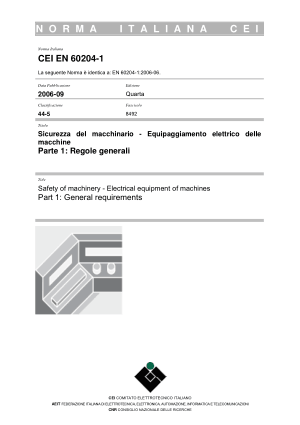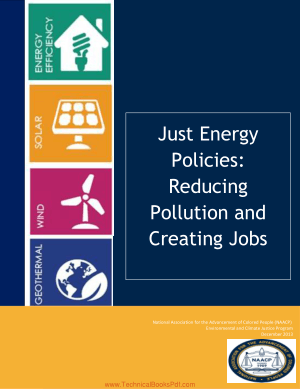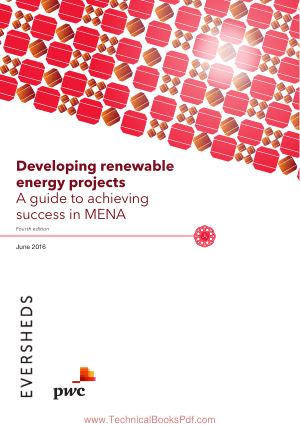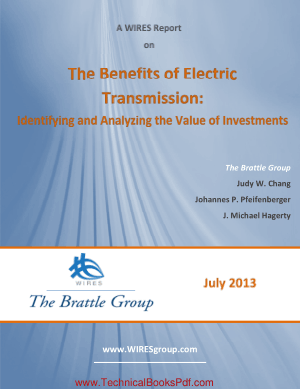Preface
Electrical engineering is an art as well as a branch of applied science and is
continually developing. Alongside this vast subject is the mostly more prosaic
subject of electrical safety engineering. Sometimes this assumes a high
profile and sometimes it becomes a matter charged with emotion in the
wake of death or injury and economic losses caused by electrical hazards.
When accidents occur it often happens that the law has some bearing on
consequent events. Whether this is statute law or civil law, it will probably
involve further hand-wringing, public pillory and, almost inevitably, great
expense (if for no other reason than that lawyers and the courts are involved).
Even though so much of electrical safety engineering is prosaic and is little
more than common sense, it is certainly not adequately understood by all
the engineers who really should have this knowledge. We know that many,
if not all, electrical engineers will find surprises and revelations in the
following pages.
Electrical safety has been a recognized subject since the turn of the
century but the old lessons are still being relearned the hard way. Mainly
this is because there has been no proper learning in the first place by those
who have assumed the titles of electrician, technician, engineer and the like.
The old tale of the electrician who claims to be safe while working on live
conductors ‘because he always keeps one hand in his pocket’ is the sort of
classic nonsense that is still far too common.
But the subject of electrical safety has advanced well beyond such banalities.
Today the problem is not so much in understanding the principles but in
knowing what the latest official guidance, standards and statutes have to say
on the matter. These add the important gloss which cannot be ignored in
today’s competitive world. Safety and standards are now finding a focus in
many European directives on which so much international trade and wealth
depends.
We have tried in this third edition to identify the important legislation,
guidance and standards. However, these are still only the gloss on what is
otherwise a foundation of safety and scientific principles compiled from
decades of experience. This continues the tradition of the first two editions.
We have been considerably helped during the work by a particular corps
of electrical engineers in the Health and Safety Executive who have themselves
been deeply immersed in these subjects and in developing the official
guidance, statutes and international standards: Brian Clark, Nigel Friswell,
Iain Maclean, John Terry and Neil Povall. We are very grateful to them for
their generous help. Others who we would particularly mention for their
special expertise and generously given guidance are Jack Feenan, Gordon
Jones, Ken Dews and Alan and John Cooper.
Part 1 General
1 Introduction 3
1.1 Electrical hazards and
electrical safety 3
1.2 Control of staff 6
1.3 Permits to work 7
1.4 Testing and research work
etc. 8
1.5 Non-electrical causes 9
1.6 Equipment design 9
1.7 Investigations 10
1.8 Report writing 11
1.9 Developments in engineering
12
1.10 Legislation and its
administration 13
1.11 ‘Consumer’ safety 15
1.12 Low voltage – below 1000
volts a.c. etc. 16
1.13 Technical advice and
expertise 16
1.14 Conclusion 16
References and further
reading 18
2 Statistical studies and
reliability 19
2.1 Introduction 20
2.2 Fundamental
considerations 21
2.3 The binomial frequency
distribution 22
2.4 The Gaussian or normal
distribution and the law of
error 22
2.5 Range 25
2.6 Confidence limits 25
2.7 Alternative presentations of
frequency distributions 26
2.8 The Poisson distribution or
law of small numbers 27
2.9 Lack of homogeneity 28
2.10 Samples and sampling 30
2.11 Extreme values 31
2.12 Empirical distributions 31
2.13 Weibull’s distribution 33
2.14 The method of moments and
goodness of fit 34
2.15 Statistical monitoring and
control limits 36
2.16 Accident control charts 37
2.17 Test results 38
2.18 Factor of safety and calamity
hazards 42
2.19 Reliability and planned
maintenance 44
References and further
reading 48
3 The nature of electrical
injuries 49
3.1 Types of injury 49
3.2 Electric shock 49
3.2.1 Hold on current and
permissible leakage 50
3.2.2 Ventricular fibrillation 51
3.2.3 Limitations of experimental
results (subjective
effects) 52
3.2.4 Body resistance 53
3.2.5 The limits of safety 54
3.2.6 The heart considered as a
control system 54
3.2.7 Effect of frequency 57
3.2.8 Shocks involving the
head 57
3.2.9 Respiratory arrest 58
3.2.10 Experience of artificial
respiration 58
3.2.11 How important is artificial
respiration? 60
3.2.12 Conclusion 61
3.3 Other injuries 61
3.3.1 Acoustic shock 61
3.3.2 Arc eye or
conjunctivitis 62
3.3.3 Fractures and torn
muscles 62
3.3.4 Burns and side effects 62
3.4 Protection against electrical
injuries 64
3.5 Toxic hazards 65
3.6 Conclusion 65
References and further
reading 66
2 General
4 Mechanical causes of
electrical failures 68
4.1 Introduction 68
4.2 Simple examples 68
4.3 Mechanical resonance and
fatigue fractures 69
4.4 Corrosion fatigue and stress
corrosion 70
4.5 Resilience, stress raisers
and elastic distortion 71
4.6 Examples of failure 71
4.7 Brittle fractures 73
4.8 Fracture of insulators 74
4.9 Causes of insulator
stresses 75
4.10 Cable failures 77
4.11 Conclusion 78
References and further
reading 79
5 Failure of electrical
insulation 80
5.1 Note on terminology 80
5.2 Breakdown of insulating
materials 80
5.3 Potential field theory 81
5.4 Resistance-controlled
insulator surface voltage
gradients 86
5.5 Dipoles and dipole
moment 87
5.6 Some fundamental
principles 90
5.7 Liquid insulation 91
5.8 Polarization and
ionization 92
5.9 Extension of the Helmholtz
theory to insulating
liquids 94
5.10 The Helmholtz double
layer 94
5.11 Electro-capillarity and the
failure of d.c. cables and
switchboards 95
5.12 Electrophoresis
(cataphoresis) 95
5.13 Application to insulating
fluids 96
5.14 Bubbles and ionization 96
5.15 Lack of homogeneity 97
5.16 Lining up 97
5.17 Chemical aspects of
insulating oil failure 98
5.18 Breakdown of air 99
5.19 Coherer effects 100
5.20 Surface moisture films 101
5.21 Tracking 102
5.22 Glass and porcelain 103
5.23 Solid and laminated
insulating material 103
5.24 Hot spots 104
5.25 Recapitulation 107
5.26 Mechanical and thermal
failure of solid
insulation 107
5.27 Types of synthetic
insulation 108
References and further
reading 109






